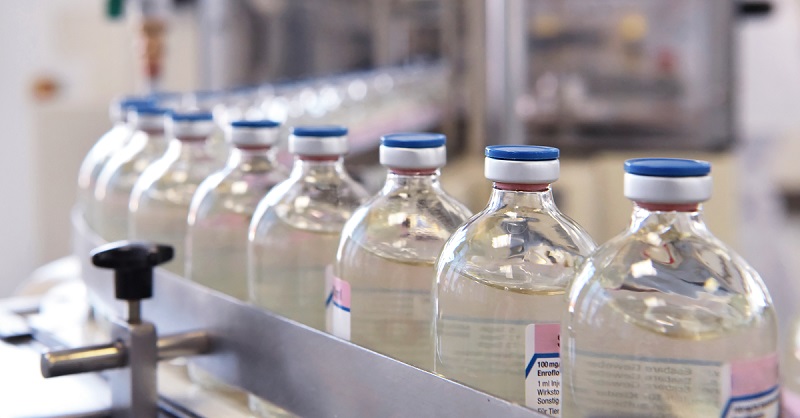Cell-based bioassays are expected by health agencies as one of the release specification methods for potency assessments in the drug development process. To develop a reliable and robust cell-based assay, many factors need to be considered, and considerable time in research and development needs to be invested to get the method ready to support pre- and post-approval phases. The complexity of the structure and function of biological drugs has increased, which in turn has significantly impacted the complexity of bioassays. Oftentimes drug manufacturers, therefore, find it difficult to establish reliable and robust bioassays in time for release testing. In some cases, even after years of effort to develop a method, it may not be feasible for a bioassay to support the program.
Let’s take a closer look at some of the inherent complexities that come with developing cell-based potency assays under GMP, and what can be done to mitigate the risk of developing a bioassay that falls short of regulatory requirements.
The Benefits and Challenges of Cell-Based Potency Assays
Potency testing assures the strength of a drug substance used during all clinical investigation phases remains consistent, and that only product lots that meet defined specifications or acceptance criteria are administered throughout the clinical study and following market approval. Manufacturers are prohibited from releasing any lot before potency and related tests are completed to meet applicable standards. Regulatory authorities strongly recommend the use of a cell-based potency assay whenever possible to obtain these measurements to meet the complexity of the functionality of the biological compound. The challenge is that cell-based assays are more difficult to develop than non-cell based methods, such as ligand-binding assays. Considerations for development include but are not limited to target pathway(s) to demonstrate mechanisms of action, availability of appropriate cell line(s), robust readouts, dilution curves/parallelism, assay windows, and consistent method performance. Even with many years of scientific investment by the global bioanalytical community and the advancement of key platform technologies, bioassays require time-consuming method development and labor-intensive execution. Despite their potential for high assay variability, cell-based assays are the gold standard for drug substance release testing.
The increased complexity of biotherapeutic modalities has magnified the impact of bioassay development challenges. The mechanism of action of these drugs may sometimes not be fully understood and it may involve multiple biological pathways. In complex drug systems, such as gene therapies, combining multiple bioassays, termed “assay matrix”, is often needed to demonstrate potency – for example, using distinct methods to detect the effectiveness of gene delivery, protein expression, and downstream effect of the transgenes. Other types of large molecule drugs, including cancer immunotherapies, may co-opt multiple cellular systems within the patient to generate efficacy. Some modern therapies are cell- or tissue-based, where the drug is comprised of cells from the patient or donors, adding yet another layer of complexity to bioassay development.
Furthermore, cell maintenance and long-term critical reagent life-cycle management have to be considered. Cell line engineering and generation may also be required if the target pathway is not available commercially, resulting in additional investment of time and resources.
Advancing Bioassays to Keep Pace with Complexity
Stringent timeline demands, GMP regulatory compliance, and biological and structural complexity require new tools and evolved tactics for more time-efficient bioassay development – yielding well-controlled bioassays with consistent performance for potency testing, and more straightforward and less labor-intensive assay execution. As part of these efforts, a larger collection of pathway-targeted cell lines, more sensitive and easier-to-use readout systems, and larger and single-lot critical reagent supplies are being developed.
For example, gene reporter-based systems are being implemented for complex cellular and multicellular systems that are often executed with single-reagent addition in order to reduce time, reduce labor, and minimize the chance of assay error. For cell therapy products with limited shelf life and smaller manufacturing lots, faster assay readout and more sensitive assay formats that require minimal testing materials are also being considered to meet current bioassay development needs.
It is also important to remember that after suitable methods are established and validated, data trending and proper control strategies must be put in place to ensure consistent method performance over time. There are a number of factors that can make it difficult to uphold GMP potency testing requirements throughout biologic development phases – from inherent variability of cell lines to multiple active ingredients and potential effector function of cells – and that is why health authorities recommend beginning bioassay development early in a drug development program.
Ensuring the Right Methods and Expertise are in Place
Time-efficient method development strategies, protocols with greater ease of execution, and better control of assay variability should be key areas of focus as strategies for cell-based potency assay design and validation are refined and may be evolved. With these in place, sponsors will have a better ability to continue their drug development programs without expanding overhead budgets or timelines that could delay patients’ access to much-needed drugs.
A critical component of success for sponsors will be choosing the right bioanalytical lab partner. Contracting research laboratories like BioAgilytix, that are specialized in bioassays and that are at the forefront of these changes, will have knowledge of the latest GMP standards and expertise working with various bioassay platforms and pathways. This experience over a wide range of product types helps meet the bioassay needs of biopharma by providing expert knowledge and quality services to support the rapid, cost-effective development of modern, complex biotherapeutics.
—
In our next blog on GMP, we’ll explore the bioanalytical considerations and best practices for impurities testing. In the meantime, if you have a large molecule bioanalysis project requiring potency testing, speak to one of our scientists to learn how we can support your product release with the appropriate potency testing services.
